|
2/8/2024 St. Anthony of Egypt and the Importance of Our Witness to Faith in a Secular WorldRead Now"The devil is afraid of us when we pray and make sacrifices. He is also afraid when we are humble and good. He is especially afraid when we love Jesus very much. He runs away when we make the Sign of the Cross." -St. Anthony of Egypt When St. Anthony of Egypt first ventured into the desert to become a hermit and devote his life entirely to God, he did not think that he would start the first monastic community–a tradition that would grow to be one of the life veins of the Church to this day. But St. Anthony inspired hundreds of men to follow him into the desert, living a life of simplicity and complete dependence on God. While at first this might seem ironic, that a man desiring to live alone would instead have hundreds of men following him and desiring to live in community with him, this story is seen time and time again throughout the lives of the saints. St. Anthony, St. Francis, St. Dominic, St. Clare, St. Teresa: each of these saints moved in a way that was completely contrary to the world when God called them to do so, and through their action inspired thousands of Christians to follow them and live lives of radical faith. We can often fall into the belief that our lives as ‘normal’ Catholics are not going to have an impact on the lives of others in any significant way, but as we see through the life of St. Anthony, every decision we make impacts and influences those around us. The men who followed St. Anthony into the desert did not do so because he was incredibly charismatic, or publicly performing great miracles, or telling them to follow him or they would go to hell. They followed because they saw that St. Anthony was joyfully living his life in a radically different way and they wanted to know what could possibly be going on so that their lives could be fulfilled like St. Anthony’s was. When we have a moment of conversion and the Lord calls us to be living saints, we are called in some way to radically change how we live our lives, no matter how big or small that change is. When we step into the change and choose to follow the Lord, we begin living as missionary disciples, our way of life witnessing to the reality which we live for. In the example of these saints, we see just how important it is that we live out these changes in a public way–that we live our lives in a way in which people can meet us and know that we are followers of Christ. Despite how small or big we may be in the mystical body, our unique charism matters and was created to help bring others into the fullness of the Christian life. When we look at the way we live our lives, what stands out as being unique to life as a missionary disciple? When we interact with a cashier at a store, do they experience an encounter with the Living God and the joy that comes with knowing Him? Are we willing to publicly live out our faith as an invitation for others to come and follow Christ, to have conversations with people about Jesus and invite them into the hope that we know? Do we stand for our morals and beliefs or do we allow others to conform our beliefs to this world? These are hard questions to ask ourselves, but we must take the time in prayer to reflect on whether the way we live brings others to follow the Christian faith, because others will follow our example. Thankfully as we see in the quote by St. Anthony at the beginning, the life of a Christian living for heaven doesn't have to be complicated, but is rather one of simple love for God and neighbor lived out through prayer, sacrifice, and faithfulness. Let us take the example of St. Anthony and live our lives in a simple, faithful way that shows those who encounter us that we are living for Christ, and that if they follow Christ they will find the same hope, peace, joy, and love that we witness to in the ways we live out our faith everyday. **This image is from: https://en.wikipedia.org/wiki/Saint_Anthony_Abbot_Tempted_by_a_Heap_of_Gold**
0 Comments
Receptivity to others is an important part of the work of evangelization. When we think about those in faith who we can look to for guidance in receptivity, we often go to Mary, and rightly so. While Our Blessed Mother is the perfect model of receptivity through her being the one who received the Incarnation, it is in examining the life of an unlikely 19th century saint that we see how we can live out Mary’s model of receptivity in a modern, secular world in order to bring others to encounter with Christ. St. John Bosco was an Italian priest who lived in the 19th century, and is known for the work he did with troubled youth in the city of Turin where he was assigned as a parish priest. During his time, it was often frowned upon for priests to educate, accompany, house, and provide for the poor youth in the ways that St. John Bosco did, but this did not stop him from his work. Through his lifetime St. John Bosco helped so many young boys in difficult situations to encounter Christ and become faithful Christians that other priests in Turin accused him of bribing the boys and “stealing” them from the other parishes. But it was not St. John Bosco’s money or ulterior motives that brought these boys to the Church, it was his ability to receive and love them fully where they were. When he met boys living on the streets, he did not immediately try to get them into the church for Mass, but rather grew to know and love them as children of the Father, becoming a trusted friend who could share the love of Jesus Christ with them. When he visited the boys in prison, he did not condemn or accuse them, but would listen lovingly to whatever they had to say, simply being with them so that they would not feel forgotten or unloved. St. John Bosco understood that the point of his evangelization was not to get as many people in pews as possible, but to bring as many people as possible to know their Savior– and to do that, a person must first know that they have an identity, a community, and a purpose. When St. John Bosco received the boys he ministered to at whatever level of faith or morality they were at, he let them know, often without words, that they had the identity of being sons of the Father, had community in Holy Mother Church, and had a purpose of getting to eternal life in the Holy Trinity. We learn from St. John Bosco how crucial of a step receiving the other is when evangelizing. It can be tempting to jump straight into a script or already be thinking about ways to invite the person you’re encountering into the faith before you’ve even started talking to them. However, the example of St. John Bosco challenges us to instead receive the person first: to listen to them, get to know them, and love them fully where they are. It is only from this place of trust in receptivity, that we can truly say to the other: “I love you, but there’s someone who loves you infinitely more, and I want to introduce you to Him.” **This photo is from https://catholiclife.diolc.org/2019/07/25/st-john-bosco-a-role-model-of-accompaniment/**
As we enter into the second week of Advent, I am drawn to reflect on Mary’s advent 2000 years ago. This period of preparation can be difficult to enter wholly into, especially in a secular world that desires to skip straight to Christmas, but one way to more fully experience the anticipation of Advent is to look to Mary. We can observe how to live out her anticipatory advent of bringing Christ to others in silence every time we receive Our Lord in the Eucharist. When Mary gave her ‘fiat’ at the annunciation, the Christ-Child was made incarnate in her womb, and she spent nine months silently bearing Christ within her and bringing Him to every person she encountered. How radical that intimacy must have been, to be the only soul on earth who knew Christ, the only one to match heartbeats with Him, to be the source of life for the savior of the world. And yet, this time of intimacy was one of great silence and humility. The Christ-Child in the womb did not make a sound, for the first several months there was little sign that Our Lady could take consolation in His presence besides the promises given to her during the Annunciation. In that silence the only way Our Lady could know her Son and King was through allowing herself to become so silent as to hear the heartbeat they shared. This silence leads to the humility of Our Lady giving all of herself to Our Lord, and this humility of laying her life down fully leads to her willingly bearing the persecution of her advent. In the greatest humility, Mary walked around Nazareth bearing the King of the Universe, and allowed assumptions of her character to be made. She did not make a scene with those she encountered, announcing loudly that she was the Theotokos, but rather allowed Christ to work in the silence, as seen in the narrative of the Visitation, when the child within Elizabeth’s womb leaps for joy at an encounter with Christ. It is in all of these reflections that we as children of Mary learn how we are also supposed to live in advent. Like Mary, we hold the Christ-Child so intimately within our very bodies every time we receive the Eucharist. We get to experience our own advent each time Our Lord enters humbly into us – the simple veil of bread and wine mimicking the simple veil of infancy which hides, from those who do not hold Christ, the reality of His presence. We have nothing we could give our King that would be a worthy offering, so we offer Him our lives. We allow Him to transform us into living tabernacles, our breath becoming His breath, our steps becoming His steps. We carry Him in our hearts and through the silence of our witness, allow Him to encounter the people we meet. Through living our lives in recognition that we carry Christ in our hearts, we grow in desire to bring Him to those we encounter first before we bring ourselves, and we learn to live in a perpetual advent, like Our Lady, allowing Our Lord to become the source of life within us.
“Andrew, the brother of Simon Peter, was one of the two who heard John and followed Jesus. He first found his own brother Simon and told him, 'We have found the Messiah' (which is translated Anointed). Then he brought him to Jesus. Jesus looked at him and said, 'You are Simon the son of John; you will be called Cephas' (which is translated Peter).” - John 1:40-42 As we celebrate the Feast Day of St. Andrew the Apostle, I am always reminded of the hidden nature of St. Andrew’s ministry. As seen in the passage from the Gospel of St. John above, Andrew is one of the first two apostles called by Jesus. Yet, we see very little of the rest of St. Andrew’s specific ministry as an apostle outside of his crucial role in bringing St. Peter, his brother, to Christ. This action taken by St. Andrew – his ‘yes’ to Jesus’ mission – was crucial to the conversion of the rock of our Church, and requires greater reflection to see how just like St. Andrew, we are called to a hidden, simple, and apostolic life that leads to the raising up the next leaders of the Church. Like all things in the Christian life, St. Andrew’s life changed when he met Jesus and was called to follow Him. Earlier in the first chapter of John, St. Andrew leaves behind everything to follow Jesus, recognizing Him as the Way, the Truth and the Life. Similarly, we in living the Christian life have all experienced that moment when we heard Jesus calling us into relationship and adventure with Him, and responded enthusiastically to that call, leaving behind the ways of the world to follow Christ. After being called, we see that St. Andrew helped to bring other people to Christ – he didn’t want to keep the good news that he had found to himself. Not only did St. Andrew want to bring his brother Peter to Jesus, but he recognized that Peter had a mission in the Church as well, and he rejoiced in what God wanted to do with the life and talents of his brother. In stepping out in the apostolic life, the first step in evangelization is to go out and share the good news with those we encounter. However, the second, and I believe more important step, is to recognize gifts in others that can help to build up the kingdom, and calling those people to use their gifts for God’s will. This kind of evangelization is very hidden – no one knows the people who helped to build up the great saints of the Church – and yet this ministry is so crucial. Evangelizing and accompanying, as St. Andrew exemplifies, allows us to rejoice in God’s movement in the world, and allows others to fulfill the fullness of their personal vocation. Who in your life has been given gifts that can be used to build up the kingdom on earth? Take a step of boldness and guide them towards the Lord so that their gifts can be used for the greater glory of God. With the intercession of St. Andrew, let us pray that the Lord will give us the grace to live out the last line of the Litany of Humility fully: “That others may become holier than I, provided that I may become as holy as I should, Jesus grant me the grace to desire it.” St. Andrew, the hidden apostle, pray for us! **This image is from: https://www.wga.hu/html_m/r/roelas/sandrew2.html**
Last Tuesday, November 21, we celebrated the feast of the Presentation of Mary. According to tradition on this day, Mary, at the age of 3, was presented in the temple by her parents St. Ann and St. Joachim, and her life was consecrated to God. For many years this feast was something I didn’t understand, and it wasn’t until last spring when I had the opportunity to visit the Holy Land that I was able to more fully appreciate this beautiful feast. When in the Old City of Jerusalem, you are able to see how small the city was at the time of Jesus’s life. One example of this is the proximity of the place where Mary was presented to Mount Calvary. It only takes a few minutes to walk from one place to another. During the passion, Mary would have passed this place. In other words, in the midst of the greatest suffering of her life, Mary would have passed the place where her parents, in gratitude, gave her life entirely to God – the place where her ‘fiat’ began. I often find myself meditating on this idea when praying the fourth sorrowful mystery of the Rosary – that Mary in suffering would be consoled with the memory of God’s faithfulness to her parents in bringing them a child. In passing the place where both she and her son were presented to God, how her heart must have felt both the overwhelming joy and premature sorrow of the sword Simeon promised would pierce her heart as he sang his canticle rejoicing in the Incarnation. In the midst of watching her only Beloved Son mocked, beaten, and killed, she remembered the song of her Magnificat and sang the praises of the psalms in her heart. Her heart must have been pulled into the prayer of Psalm 23 as she walked up towards Golgotha, “Even though I walk in the valley of the shadow of death, I fear no evil for you are with me; your rod and your staff comfort me.” Mary did not forget that God had been faithful her entire life, and did not doubt His faithfulness at the darkest hour of history. Rather, she clung to Him and obediently received His will, despite the sorrow it caused her immaculate heart. We learn to suffer well from the model of Our Blessed Mother, and one of the most important aspects of faith in suffering is to remember God’s own faithfulness. Like Mary, we can turn back towards God in the midst of suffering, we can remember the moment that we met Jesus and our lives changed, remember the moments where we experienced the overwhelming radical love of God, and hold onto that love and faithfulness as truth. Mary’s presentation calls us to reflect on all the different times throughout our life that we have seen God be faithful, and trust that He will be faithful once again. This feast calls us to give ourselves wholly to God as Mary did, and trust that His will be done – and that His will is good – in all things.
This year, the Solemnity of the Most Sacred Heart of Jesus will be celebrated on June 16 and is one of my favorite days in the Church calendar. As I have become more and more involved in the new evangelization, I have come to realize that the Sacred Heart of Jesus is a crucial part of evangelization and relationship with Him. Trying to effectively convey the love that God has for His children is impossible without bringing them first to the Sacred Heart, where the depth and breadth of His love is felt and seen. The Sacred Heart is an image or phrase that many of us may be familiar with, but what does it actually mean? The image of the Sacred Heart was given to Saint Margaret Mary Alacoque in the late 16th century during a vision of Jesus that she experienced. Jesus desired not for Alacoque to keep this image to herself, but to share it with all people so that they could understand how deep His love was for them, and so that they had a way to return this love. When we look at the image of Jesus’ Sacred Heart, we see the entirety of His love for us. Through the flames we can see how He burns out of love for us. The thorns show us the depths of eternal suffering He is willing to endure for us, and His blood spilling out perpetually reminding us that the freely given gift of His love never can and never will be taken away. We cannot bring others to encounter Jesus Christ without His Sacred Heart. We need to carry it within ourselves so that when we meet others they meet Him first, encountering His radical love as it flows into us and overflows into those around us. We also need to carry His heart for the people we encounter, asking Him to show us the way He loves the people around us so that we can love them in that same way. When we encounter the people around us with the love of the Sacred Heart, we help them to realize that there is a person who infinitely sees, knows, and loves them, and desires more than anything else to be in relationship with them, and His name is Jesus Christ. Contained with the Sacred Heart of Jesus is the love He has for each of us, and the love we have for Him. When looking at His heart, Jesus invites each of us to find home within His heart and allow His heart to be at home within ours. The Sacred Heart is the image of Christ’s love for us, and the way we are called to respond to it. Looking at the radical, never ending love He has for us, the only response we have is radical, complete love given back to Him. We are called to receive the flame of love He gives us through the Holy Spirit and burn out of love for Him. We tend to His wounds in our love and unification of our sacrifice and suffering to His. We open ourselves up to Him and allow the Divine Mercy flowing from His pierced heart to wash over us. The Sacred Heart is not merely a symbol of love and salvation, but a call to relationship with Him.
In preparation for Pentecost this year, I began reflecting on its significance in my life and the life of the Church. When we as Catholics hear the word “Pentecost,” several things may come to mind. To some it is simply the birthday of the Church, to others it is the day signifying the end of the Easter season, to others still it may be a day that comes and goes without notice. That is how Pentecost was for me for a long time: a day that happened without me noticing until I realized a week later that all of the Easter decorations in the church were gone. As I grew deeper in my faith, I began to see the importance of Pentecost as the start of the Church and the reception of the Holy Spirit, but there was still something missing in my understanding of this day. I knew that Pentecost was supposed to be more than just a day that comes and goes each year, but I struggled to see how a day that happened two thousand years ago would impact the way I live my life today. When we look at Acts 2, we can see what Pentecost was like. It was a time of prayer, fasting, waiting for God to fulfill His promises, and the fulfillment of those promises in the descent of the Holy Spirit onto the disciples. The beauty of this event when we look at it in Scripture is that this is not something that happened two thousand years ago. We know that Scripture is performative, that it is living, active, and does what it says. If we as Catholics are disciples of the Lord, then that means that this living reality of the descent of the Holy Spirit is something that we can experience as well, and we do so through the sacraments. And as disciples who have received the Holy Spirit, we can follow the footsteps of the Apostles and take the Holy Spirit with us out into the world, spreading the good news of the Gospel to those we encounter, using the gifts of the Holy Spirit to bring glory to God. Saint Pope John Paul II, Pope Benedict XVI, and Pope Francis have all spoken about the coming of and need for a new Pentecost. As the world we live in grows increasingly secular, as the number of people who know and experience the love of Jesus Christ diminishes, it is our job as Christians, as missionary disciples, to cry out for a new Pentecost. We must ask for the Holy Spirit to fall afresh on us like He did at Pentecost, to give us the gifts we need in order to guide those around us to encounter God. Through the gifts of the Holy Spirit that we receive at our Baptism and Confirmation—wisdom, understanding, counsel, fortitude, knowledge, piety, and the fear of the Lord—we have the ability to listen to the Holy Spirit and be obedient to His will in our lives. When we live with recognition of this reality, asking the Holy Spirit to guide us and our actions, we can live as witnesses like the Apostles did after Pentecost, carrying Christ’s Spirit in us at all times, allowing Him to breathe His life and love into those we encounter.
Last month I had the opportunity to go to Lisieux, France, and visit the tomb and home of one of my favorite saints, St. Therese of Lisieux. While visiting the Carmelite monastery where she lived, one thing that struck me was the hundreds of letters from soldiers fighting in World War I, letters thanking Therese for her intercessory prayer from heaven that miraculously protected them during battle. Not knowing how to thank her, these soldiers sent letters of gratitude to her religious order. It was these letters that opened her cause for canonization. St. Therese is now considered the patron saint of missionaries because of her powerful intercession. This experience brought me to reflect on the importance of intercession in our lives and how we can better live intercessory lives by imitating the model of St. Therese’s life. It seems that asking for intercessory prayers is a part of the daily life of many Catholics, but what is our disposition when this happens? It can be so tempting to half-heartedly ask someone to intercede for a person or situation in your life, not expecting anything to happen as a result. Even more often, I find myself saying yes to intercede for someone and then not putting the intention and time into the prayer that I should. I think the main cause of all of these roadblocks in intercession comes from not understanding the power our prayer has, and this is a lesson we can learn from St. Therese. St. Therese realized that our prayer has power because it is the cry of children to their Father, a Father who can’t resist saying “yes” to His children. She saw prayer not as bargaining with God, but as uniting her will and desires to God’s and asking that the same happen for whoever she was interceding for. Approaching prayer in this way radically changes the way that we intercede for others. We can step out and ask for prayer boldly and with confidence, because we can trust that the prayers will help bring about God’s will in our lives, not our own. Another key part of St. Therese’s model for intercession is that she saw intercession not as her own work, but as God’s work. St. Therese called her spirituality “the little way,” and it involves recognizing our own weakness and littleness before God and asking Him to sanctify us and bring us closer to Him through our littleness. One of the most fundamental keys to intercession is believing in the power of our prayers despite our littleness and imperfection. To understand the power of our prayer, we need to understand that God delights in us and desires to use us in our littleness. St. Therese explains that when we become little, we make room for God to work. If we apply this same principle to intercessory prayer, we see that no matter how small or simple the prayer, God wants to use it for His greater glory. God doesn’t ask us for a big complicated prayer but for the honest prayer of our hearts, no matter its size. Intercessory prayer is one of the most important parts of Catholic life, but often it can be overlooked. Looking at the model of St. Therese and her little way, we can learn that intercessory prayer is a beautiful part of our lives. Further, we see that it can make a real, tangible difference in the natural and supernatural realities around us when we offer our prayers with full confidence in God’s providence despite our littleness. St. Therese, pray for us, and teach us how to intercede like you!
“Return to me with your whole heart, with fasting, and weeping, and mourning; Rend your hearts, not your garments, and return to the Lord, your God. For gracious and merciful is he, slow to anger, rich in kindness, and relenting in punishment” (Jl 2:12-13). There’s a moment in every Lent when I begin to stumble. When the promises I made seem too difficult, when I convince myself that the Lord doesn’t need my sacrifice, when I begin to follow the call of comfort and leave Christ’s side—and very suddenly I find myself lost in the desert. Maybe this experience sounds familiar to you, finding yourself two, four, six weeks into Lent, and all of a sudden you lose your motivation and forget why you decided to make your Lenten promises in the first place. It can be tempting when you find yourself in the place I fondly call “the mid-Lent slump” to give up entirely and say, “Maybe next year will be better,” “Maybe next year will be my year,” but in this post I want to present a different solution. This year, when we find ourselves lost in the desert, let’s press into the discomfort and ask Christ to teach us how to be with Him there. There’s a meditation that I have found to be incredibly helpful when I find myself in this place during Lent. Begin by placing yourself at the scene of the Baptism in the Jordan. What does it look like, smell like, sound like? How do you feel when it is revealed that the man in front of you is the Son of God? Then Jesus begins to walk into the desert and you follow Him. Why do you follow? Have you prepared for this trip, or have you brought nothing, trusting that He will provide? How do you feel now that you are in the desert? When we find ourselves in “the mid-Lent slump,” we need to remind ourselves of why we committed to Lent in the first place. When we are able to remember this “why,” we are given new strength to continue into the desert, to press in with Jesus into the discomfort, leaning on Him for strength, because we realize we aren’t alone in the desert. All of this, however, can be very difficult without practical steps to return to Jesus in the desert. Here are some that I have found to be most helpful when Lent becomes difficult.
Most importantly, as you press into Lent in the midst of the “slump,” remember the Lord’s unending mercy and love for you. As it says in Joel 2, God desires for us to return to Him with contrite hearts so that He can pour out His mercy and grace onto us. When you find yourself struggling in Lent, turn back to Him in all His kindness, and ask Him to walk with you and give you the strength you need to continue following Him into the desert.
“Dear young people, the happiness you are seeking, the happiness you have a right to enjoy has a name and a face: it is Jesus of Nazareth, hidden in the Eucharist. Only He gives the fullness of life to humanity!” – Pope Benedict XVI, Address to Young People, Apostolic Journey to Cologne on the Occasion of the 20th World Youth Day
Growing up as a cradle Catholic, it was always easy to take the Eucharist for granted. Even though I recognized the true presence, it was tempting to see Holy Communion, adoration, and Jesus being present in the tabernacle as a bonus to the faith and not the foundation of the way I lived my life. Now that I serve in youth ministry, I see that this line of thinking too often becomes the norm for young Catholics. But what happens when young Catholics live a life centered around the Eucharist, when they allow themselves to be consumed by Christ, finding complete freedom in complete surrender? They begin to live in their identity as beloved sons and daughters. I got to witness this transformation firsthand this summer serving as a missionary with Catholic Youth Summer Camp. Every week, I watched middle school and high school students meet Jesus in the Eucharist for the first time, experiencing His love and feeling the truth of their identity in a real, tangible way. And every week after these experiences, there was a shift in the way these kids lived their lives. It was as if they were no longer afraid of being judged or not accepted by the teenagers around them; instead, they were confident in the sufficiency of the love they felt from God. When the campers started to recognize and feel the truth of their identity as sons and daughters, when they realized that they can look into Jesus in the Eucharist and physically see that truth, they no longer cared about the opinions of the people around them and would do whatever brought them joy. This often looked like the small but life-changing steps of fully entering into the Mass and worship, taking times of prayer seriously, and having childlike fun and joy throughout the day. Throughout the summer, I began to realize that the experience that these teenagers had in their first moment of encounter with Jesus, the childlike joy and freedom they experienced, is not an experience for them—or for children—alone. All of us, including You and I, are all seen by the Father as His beloved daughters and sons, and He desires to show us that truth and the love He holds for us in a real, tangible way through the Eucharist. Every time we receive Jesus into our bodies, every time we spend time gazing into His face in adoration, we give Him the opportunity to remind us of how unconditionally loved we are, how we belong with Him and nothing else. These truths give us the freedom to not fear what waits in the world, nor fear the chains of sin or worldliness. They help us recognize that there is no fear in the perfect love we experience living in Jesus Christ, and the only thing we have to worry about is following His will. When the world is not something to fear, we can recognize creation as the gift that it is and receive what the Lord has waiting for us. The next time you go to Mass or adoration, recognize that Love Incarnate is entering you in order to prove just how far He’ll go to show that you belong with Him. Allow that truth of His unconditional love and your belonging in it to shape the way you live your life, embracing the freedom He has won and given to us.
|
Details
Archives
July 2024
Categories
All
|
About |
Media |
© COPYRIGHT 2024 | ALL RIGHTS RESERVED

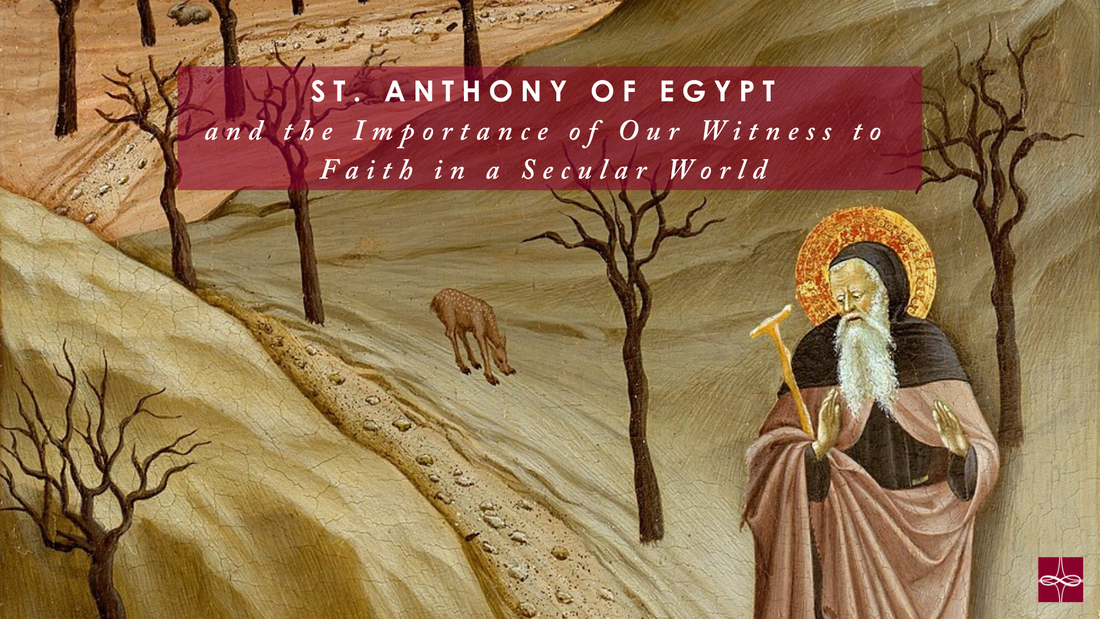

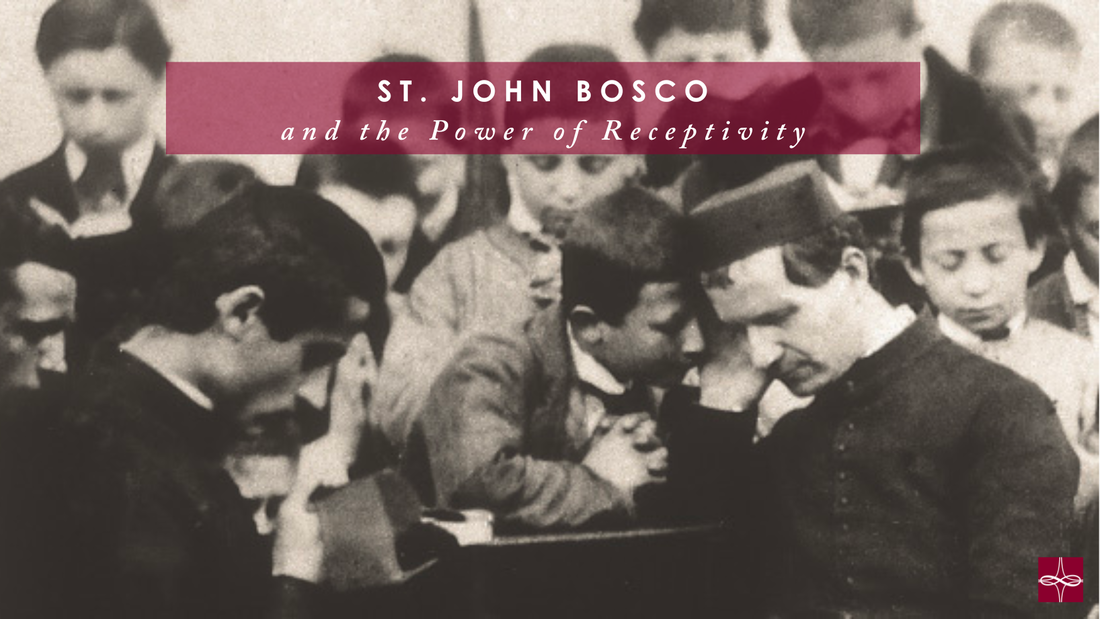
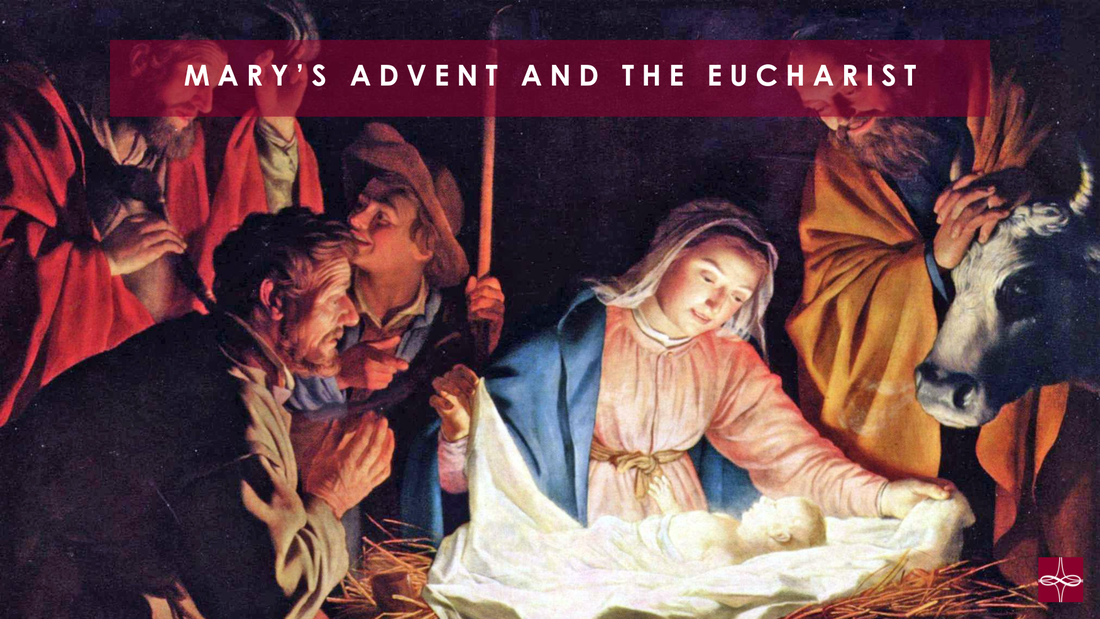
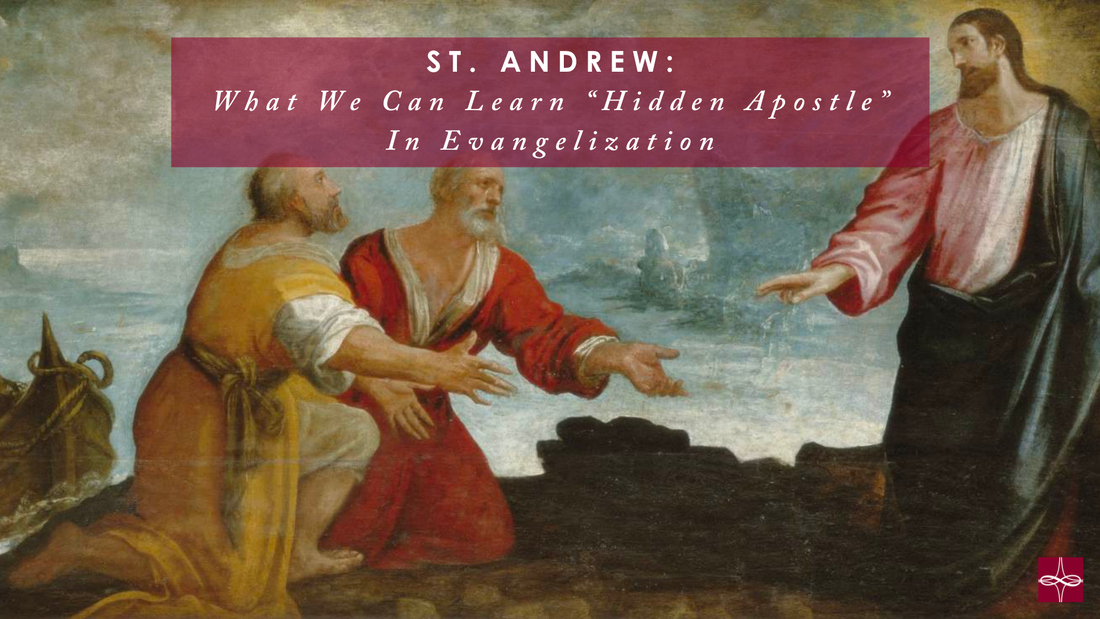
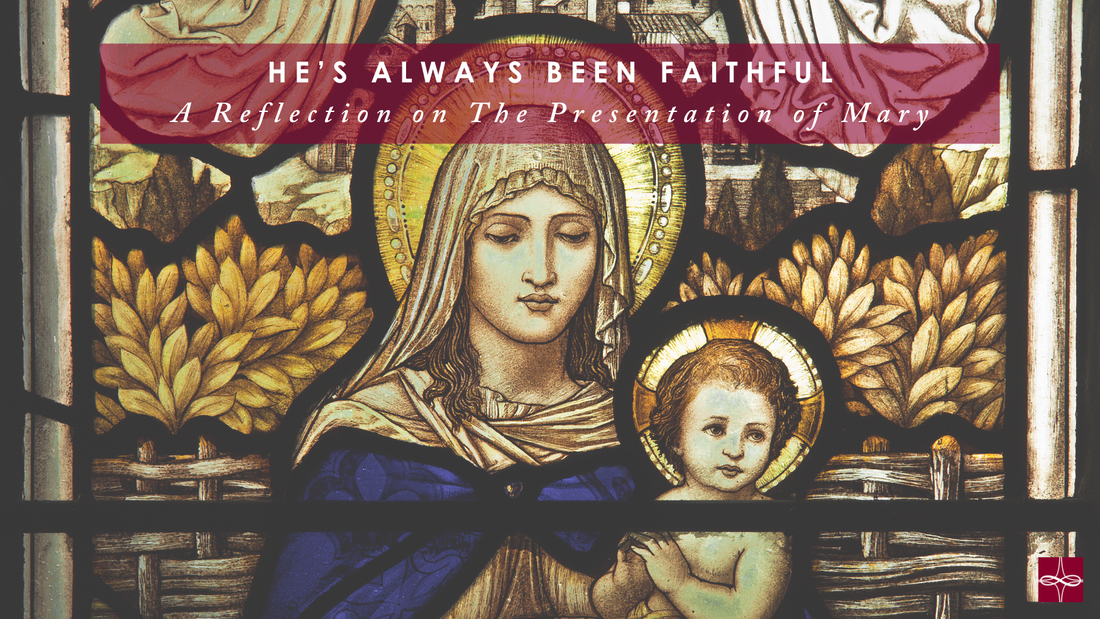
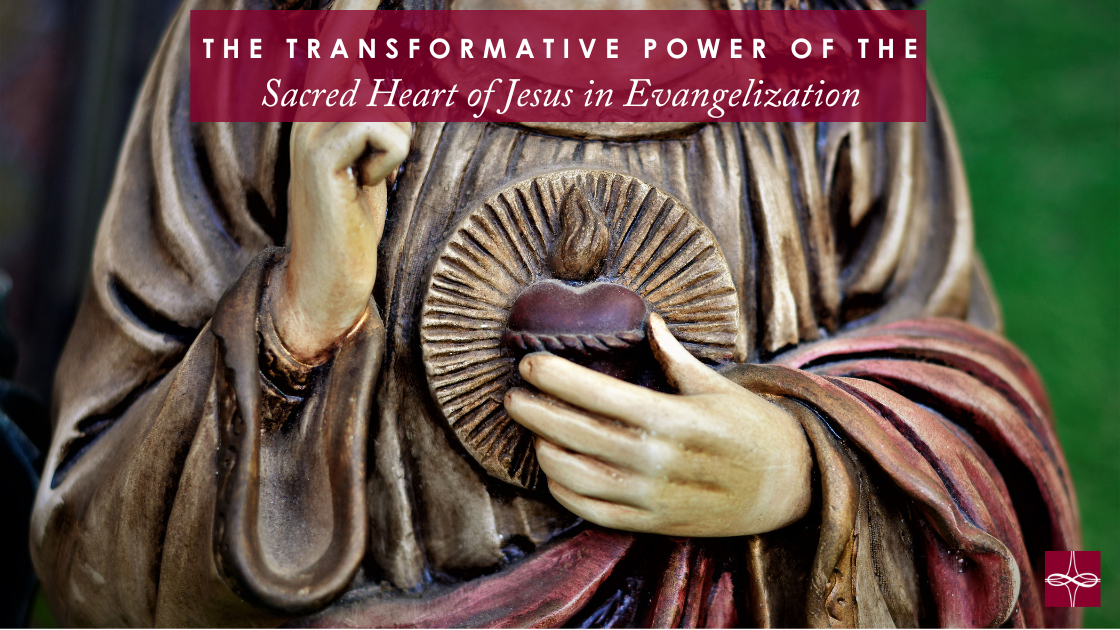

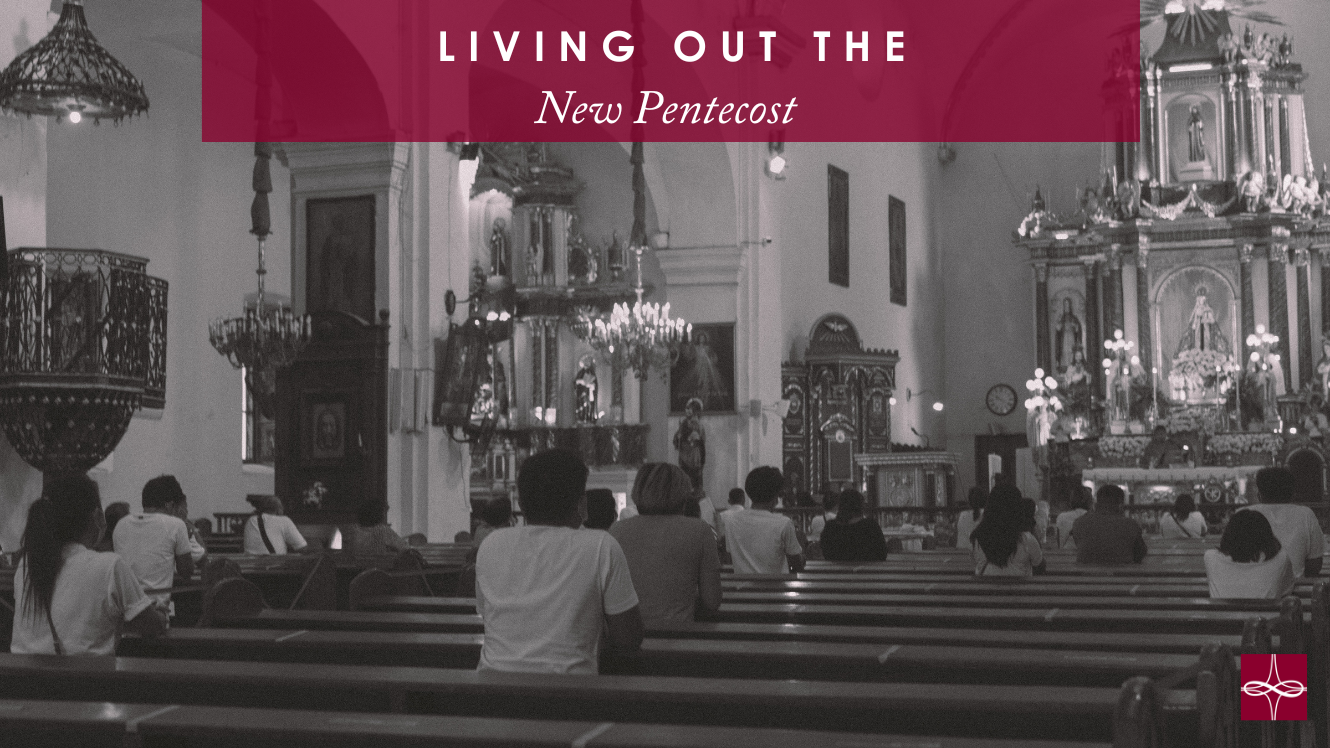

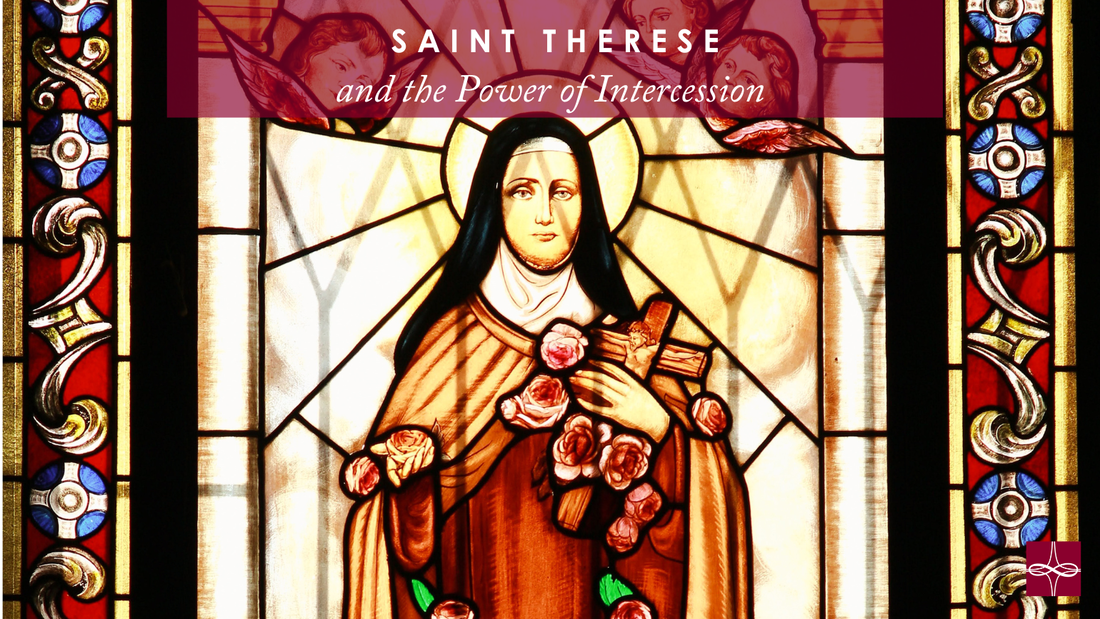


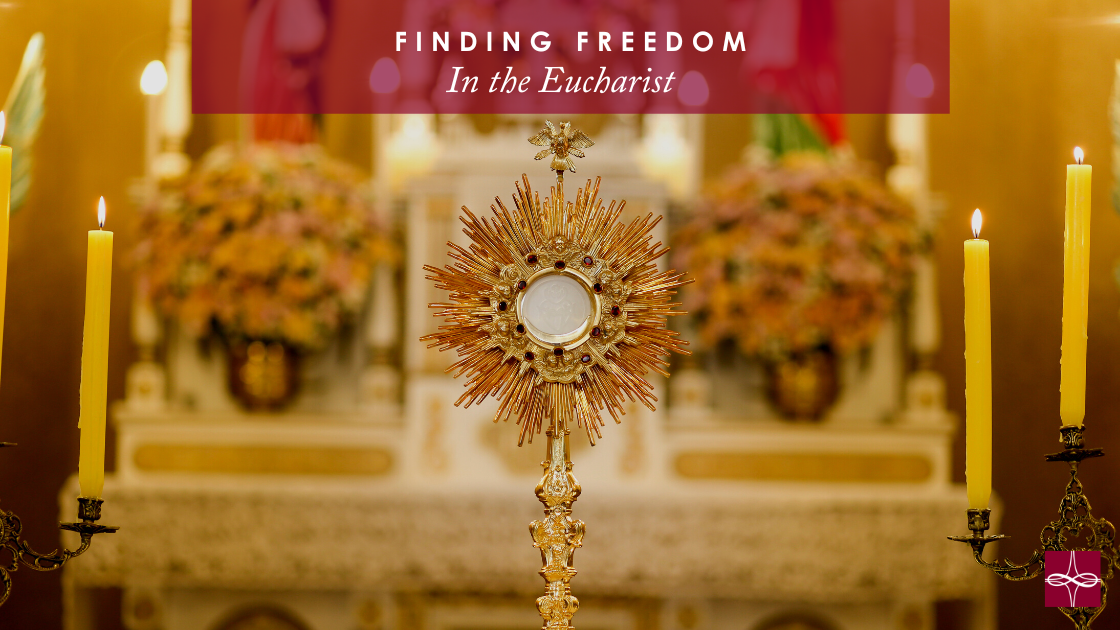
 RSS Feed
RSS Feed